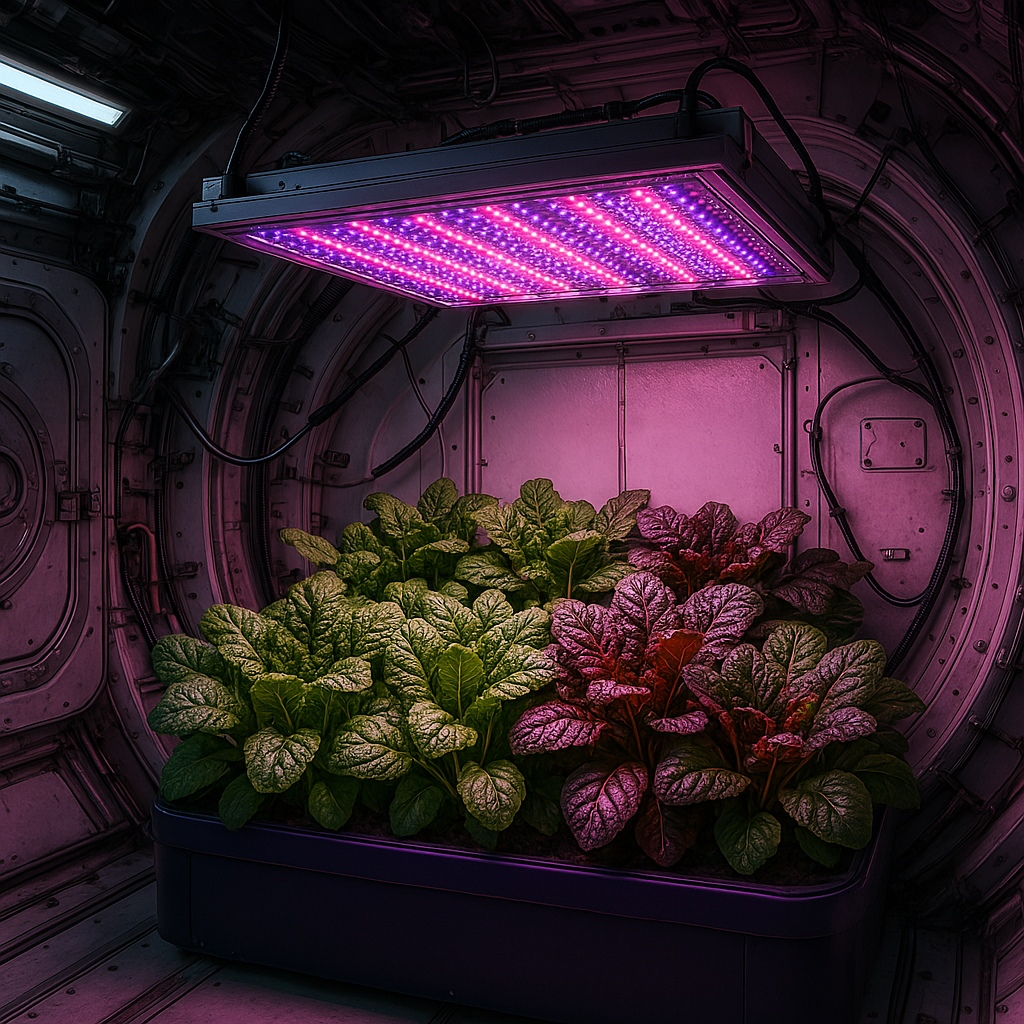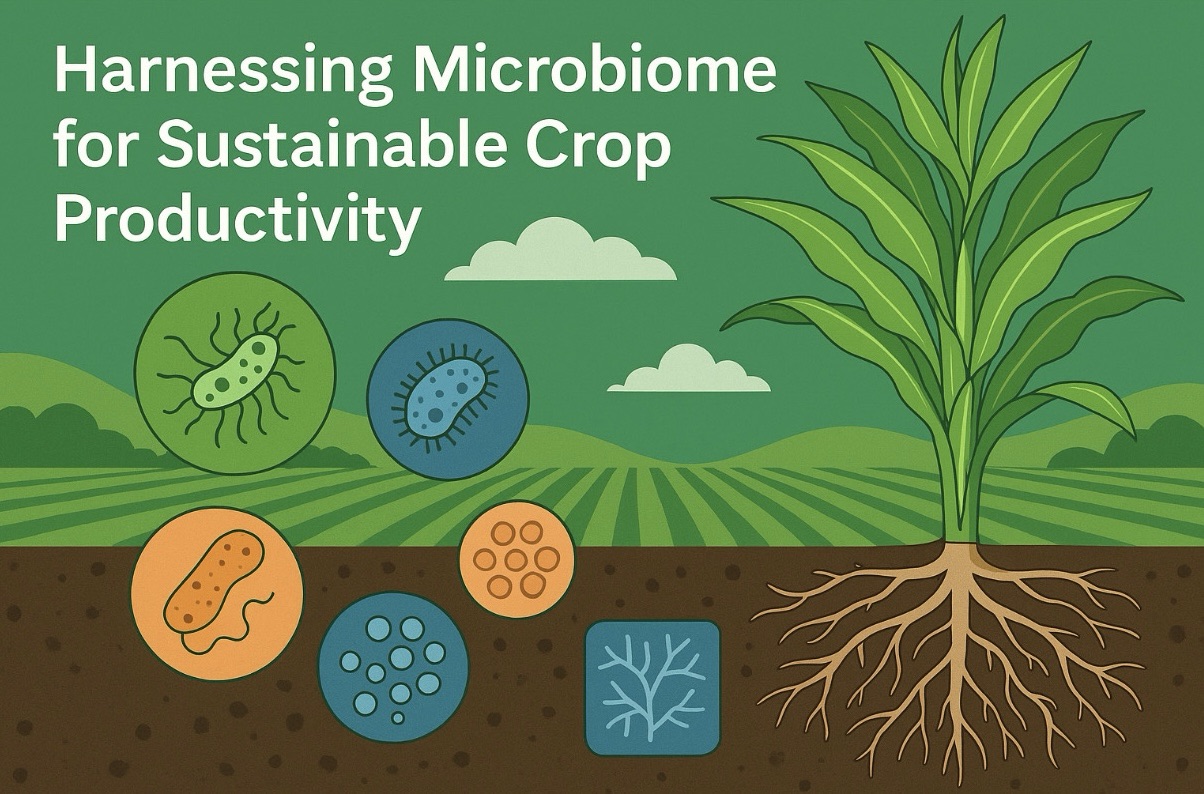As space agencies and private companies set their sights on Mars and beyond, one pressing challenge stands out—how to support human life on long-duration space missions. While rockets, propulsion, and life-support systems often steal the spotlight, a quieter revolution is taking root in orbit: space gardens. These miniature agricultural experiments may hold the key to sustaining astronauts on multi-year journeys far from Earth. Beyond just food, these gardens could support the psychological, nutritional, and environmental needs of astronauts, making them essential components of future space missions.
Growing plants in space is not a new idea. Since the 1980s, space agencies have experimented with cultivating various plants aboard space stations. From Soviet cosmonauts nurturing Arabidopsis on the Salyut stations to NASA’s more recent Veggie experiment on the International Space Station (ISS), the concept of gardening in microgravity has evolved from a novelty into a serious field of study. The reason is simple: traditional resupply missions become less feasible the farther humans travel from Earth. Missions to Mars could last three years or longer, making it impossible to rely solely on stored food. Space gardens offer the potential to provide a renewable food source that can be harvested repeatedly, reducing dependency on Earth-based supply chains.
One of the most compelling reasons to invest in space agriculture is the nutritional advantage of fresh produce. Pre-packaged space food, while convenient and shelf-stable, tends to lose nutritional value over time. Vitamins like C and K degrade during long-term storage, which can be detrimental to astronaut health on extended missions. Space-grown vegetables could supply these essential nutrients in their most bioavailable form, helping to maintain a balanced diet and prevent deficiencies. Leafy greens like lettuce, kale, and spinach—already successfully grown on the ISS—are rich in these vitamins and could become dietary staples on deep-space missions.
In addition to their nutritional value, space gardens can have a significant psychological impact on astronauts. The mental strain of isolation, confinement, and sensory deprivation during space travel is well-documented. Tending to plants has been shown to reduce stress and promote well-being, offering astronauts a connection to life and a sense of purpose. The presence of greenery and the routine of gardening provide a comforting reminder of Earth, helping to maintain morale in the face of extreme conditions. In long-duration missions, where mental health is just as critical as physical health, this psychological boost could prove vital.
Beyond food and mental well-being, space gardens contribute to the closed-loop life-support systems needed for deep-space travel. Plants naturally recycle carbon dioxide into oxygen through photosynthesis, helping to purify cabin air. They also help manage humidity and can potentially process waste products, creating a more self-sustaining habitat. On future Mars bases or lunar outposts, where resupply is infrequent and every resource must be carefully managed, the integration of plants into the habitat ecosystem could be a game-changer.
Yet, growing plants in space is not without challenges. Microgravity alters the way plants grow, affecting root development, water distribution, and nutrient uptake. Without gravity, water doesn’t drain through soil naturally, which can lead to over-saturation and root rot. NASA has addressed this with hydroponic and aeroponic systems that use mist or nutrient-rich water solutions rather than soil, but perfecting these systems takes time and research. Light is another critical factor—without sunlight, astronauts must rely on artificial LEDs carefully tuned to mimic the light spectrum required for photosynthesis. Temperature, humidity, and airflow must also be precisely controlled in the confined environment of a spacecraft or habitat.
Radiation is another major concern. Unlike Earth, space offers little protection from cosmic radiation, which can damage both plants and humans. Researchers are studying how plants respond to radiation exposure and whether they can be genetically modified to be more resilient. In the future, underground or shielded greenhouses on the Moon or Mars might protect crops while maintaining optimal growing conditions.
While the technology is still developing, recent successes have shown that space gardening is not only possible but increasingly practical. NASA’s Veggie project has already produced edible crops like lettuce, radishes, and mustard greens, which astronauts have consumed in orbit. The follow-up Advanced Plant Habitat has demonstrated the ability to automate environmental controls, making plant growth more efficient. Similar efforts are underway in China and Russia, with a global effort coalescing around the goal of sustainable space agriculture.
Private companies are also getting involved. SpaceX, Blue Origin, and others envision long-term human settlement off-world, which will require scalable food production systems. Partnerships between space agencies, academic institutions, and agritech startups are accelerating innovations in controlled environment agriculture that benefit not just astronauts, but also farmers on Earth. Techniques developed for space—like vertical farming, precision nutrient delivery, and climate-controlled growing environments—are already being adapted to urban farming and food production in inhospitable regions on Earth.
Looking ahead, the integration of space gardens into mission architecture will likely become standard. On the Moon, astronauts may live in partially underground habitats with hydroponic systems growing crops in shielded environments. On Mars, greenhouses could be constructed with local materials, leveraging CO₂-rich atmosphere and abundant sunlight. Even during transit, spacecraft may include rotating garden modules to simulate gravity and support continuous food production.
In conclusion, space gardens represent far more than just a source of salad in orbit. They are multi-functional systems that support human survival across nutrition, mental health, and environmental sustainability. As we prepare to venture farther into the cosmos than ever before, these small patches of green could become our most vital lifeline. The future of space exploration may well be rooted in the humble garden.
References:
1. Massa, G. D., Dufour, N. F., Morrow, R. C., et al. (2016). VEG-01: Veggie Hardware Validation Testing on the International Space Station. Open Agriculture, 1(1), 33–41. https://doi.org/10.1515/opag-2016-0005
2. Wheeler, R. M. (2010). Plants for human life support in space: From Myers to Mars. Gravitational and Space Research, 23(2), 25–35. https://doi.org/10.2478/v10029-010-0004-8
3. NASA. (2020). Growing Plants in Space. NASA Veggie Experiment Overview. Retrieved from https://www.nasa.gov/mission_pages/station/research/experiments/383.html
4. Zabel, P., Bamsey, M., Schubert, D., & Tajmar, M. (2016). Review and analysis of over 40 years of space plant growth systems. Life Sciences in Space Research, 10, 1–16. https://doi.org/10.1016/j.lssr.2016.06.004
5. Ferl, R., Paul, A. L., Levine, H. G., & Wheeler, R. M. (2002). Plants in space. Current Opinion in Plant Biology, 5(3), 258–263. https://doi.org/10.1016/S1369-5266(02)00252-2
6. NASA. (2021). Plant Habitat-02 (PH-02). Retrieved from https://www.nasa.gov/mission_pages/station/research/experiments/explorer/Investigation.html?#id=7803
7. Dueck, T. A., van den Boogaard, R., et al. (2016). Can plants help astronauts cope with stress in space? Acta Horticulturae, 1134, 193–200. https://doi.org/10.17660/ActaHortic.2016.1134.25
8. United Nations Office for Outer Space Affairs (UNOOSA). (2020). Space and Agriculture. Retrieved from https://www.unoosa.org/oosa/en/ourwork/spaceapplications/agriculture.html







